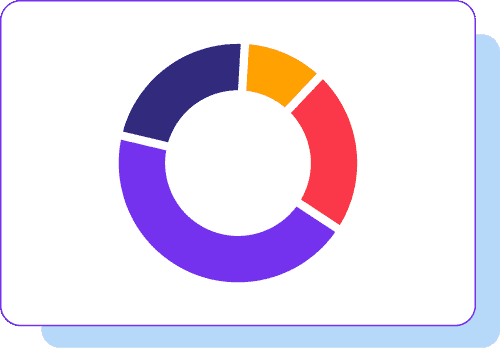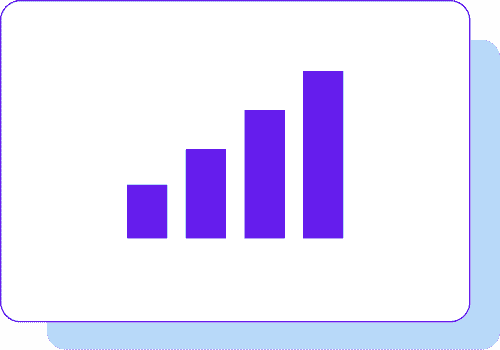Welcome to another installment in the Digital Mastery Series, where we explore the art of mastering the digital realm. In this guide, we dive into a crucial aspect of digital marketing excellence: “Optimising Page Load Speed for Better User Experience.” In our rapidly evolving digital age, where information is just a click away and attention spans are dwindling, the significance of page load speed cannot be overstated. It’s not just a matter of technical optimisation; it’s a critical factor in ensuring a positive and seamless user experience.
The Significance of Page Load Speed
As the digital landscape continues to expand, users have grown accustomed to immediate access to information, products, and services. We’ve become more impatient, with little tolerance for slow-loading websites. The consequences of a sluggish website can be profound, affecting engagement, conversions, and even your website’s search engine ranking.
Think of it this way: every second counts. Research has shown that a mere one-second delay in page load time can result in a significant drop in user satisfaction and conversions. In today’s fast-paced digital world, users expect websites to load quickly and smoothly. Anything less can lead to frustration, increased bounce rates, and a negative perception of your brand.
Page Load Speed and User Experience

The connection between page load speed and user experience is inseparable. Users visit websites with a specific purpose in mind, whether it’s finding information, shopping, or enjoying content. When a website is slow to load, it hinders users in achieving their goals. This frustration can overshadow even the most compelling content or attractive design, leaving a lasting negative impression.
Fast page load speeds contribute to a positive user experience in various ways:
Reduced Bounce Rates: Users are more likely to stay on a site that loads quickly, reducing bounce rates and increasing engagement.
Higher Conversions: Faster-loading pages are linked to higher conversion rates, which can have a significant impact on the success of e-commerce websites and lead generation.
Improved SEO: Search engines like Google consider page speed as a ranking factor. Faster-loading pages are more likely to appear higher in search results.
Enhanced Mobile Experience: With the growing use of mobile devices, fast page load speeds are crucial for retaining mobile users and ensuring their satisfaction.
Overview of the Guide
This guide is your roadmap to harnessing the power of page load speed for the betterment of your website and user experience. We’ll explore the factors that influence page load speed, the tools and techniques available for optimisation, and the real-world impact of these efforts. You’ll gain a comprehensive understanding of how to make your website faster, more responsive, and ultimately, more user-friendly.
The subsequent sections will delve into various aspects of page load speed optimisation, offering practical advice, case studies, and tools to assist you in your journey toward creating a faster and more user-centric digital presence. By the end of this guide, you’ll be well-equipped to make informed decisions and improvements that will positively impact your website’s performance and user experience.
Understanding the Impact of Page Load Speed
In the ever-evolving digital landscape, where user expectations are continually on the rise, understanding the profound impact of page load speed is essential for creating a positive user experience. This section explores the multifaceted influence of page load speed on user experience, mobile responsiveness, SEO, and the often underestimated psychological impact on users.
How Page Load Speed Impacts User Experience
Page load speed is the digital welcome mat to your website. It sets the tone for the entire user experience. Here’s how it influences user perception and engagement:
First Impressions Matter: Users form an initial impression of your website within milliseconds of landing on it. A slow-loading page can lead to a negative first impression, while a fast one instills trust and a positive attitude.
Reduced Bounce Rates: Users are more likely to stay and explore a site that loads quickly. Slow-loading pages increase bounce rates as impatient visitors are more inclined to hit the back button.
Enhanced Engagement: Faster pages encourage users to interact with your content, products, or services. Users are more likely to view more pages, increasing their engagement and time spent on your site.
Higher Conversions: Speed is a driver of conversion rates. Whether your goal is to make a sale or capture leads, faster-loading pages lead to higher conversion rates, directly impacting your bottom line.
Improved User Satisfaction: User satisfaction is closely tied to speed. Users who have a seamless, fast experience are more likely to return and recommend your site to others.
Mobile Responsiveness and Speed
With the increasing prevalence of mobile devices as primary web access points, mobile responsiveness and speed go hand in hand. Here’s why mobile page speed matters:
Mobile-First Indexing: Search engines prioritise mobile-first indexing, considering mobile versions of websites as primary for ranking. Fast mobile page load speed directly influences your search engine ranking.
User Expectations: Mobile users, often on the go, expect even quicker page load times. A slow mobile experience can lead to frustration and abandonment.
Conversion on the Go: For e-commerce websites, service providers, and local businesses, mobile users represent a significant chunk of potential conversions. Faster mobile pages can make all the difference.
The SEO Benefits of Faster Loading Pages
Search engine optimisation (SEO) is not just about keywords and backlinks; page load speed plays a vital role. Here’s why faster pages are favored by search engines:
Improved Ranking: Search engines like Google consider page speed as a ranking factor. Faster-loading pages are more likely to appear higher in search results, gaining more visibility.
Crawl Efficiency: Search engine bots crawl faster on responsive websites. Faster page load times enable more efficient indexing, which is essential for SEO.
User Experience Signals: Google and other search engines track user experience signals, including bounce rates and time on site. A fast-loading site leads to better user engagement, positively affecting these signals.
The Psychological Impact on Users
Page load speed isn’t just about numbers; it has a psychological impact on users. Here’s how it influences user emotions and behavior:
Frustration and Impatience: Slow-loading pages evoke frustration and impatience. Users may leave your site before experiencing its full value.
Perceived Trustworthiness: A fast-loading website is often associated with trustworthiness and professionalism. Users are more likely to trust and engage with such sites.
Brand Perception: Page load speed can influence how users perceive your brand. A slow site may lead users to question your competence and reliability.
Stress Reduction: Speed reduces stress. Users on fast sites feel more at ease and are more likely to have a positive experience.
Understanding the far-reaching implications of page load speed on user experience, mobile responsiveness, SEO, and the psychology of your visitors is the first step toward effective optimisation. By addressing these aspects, you can create a digital environment that not only attracts but also retains and delights your users.
Measuring Page Load Speed
To optimise page load speed effectively, it’s essential to begin with accurate measurement and analysis. This section provides insights into the tools and metrics used for page speed analysis, a deep understanding of key performance indicators, and the importance of benchmarking your website’s performance.

Tools and Metrics for Page Speed Analysis
Accurate measurement is the foundation of effective optimisation. Here are the essential tools and metrics for measuring page load speed:
Google PageSpeed Insights: This widely used tool offers insights into both mobile and desktop performance. It provides a PageSpeed score and practical suggestions for improvement.
WebPageTest: A comprehensive tool that allows you to test your website’s speed from multiple locations and devices. It provides a waterfall chart showing resource loading times.
Lighthouse: Built into Google Chrome’s developer tools, Lighthouse audits web pages for performance, accessibility, best practices, SEO, and progressive web apps.
Pingdom: Offers website monitoring and performance testing. It provides a breakdown of your page’s performance, load times, and bottlenecks.
GTmetrix: Combines PageSpeed and YSlow insights to analyse your website’s speed. It provides a report with actionable recommendations.
New Relic: A comprehensive performance monitoring tool that tracks the real user experience. It helps you identify performance bottlenecks and optimise accordingly.
Understanding Key Metrics
To make sense of the measurements, you need to understand the key metrics that reveal your website’s performance:
First Contentful Paint (FCP)
FCP marks the point in the loading process when the first content (text, images, etc.) is rendered on the screen. It’s a crucial user-centric metric, as it signifies that the user is seeing something meaningful. The faster the FCP, the better the user experience.
Time to Interactive (TTI)
TTI measures how long it takes for a page to become fully interactive, meaning users can interact with all elements on the page. It’s a critical metric for determining when users can engage with your site. A faster TTI enhances user engagement and satisfaction.
Speed Index
The Speed Index measures how quickly the contents of a page are visibly populated. A lower Speed Index indicates faster visual rendering and a more positive user experience.
Total Blocking Time (TBT)
TBT quantifies the time during which users are unable to interact with your page due to loading. Reducing TBT enhances user engagement and interaction.
Cumulative Layout Shift (CLS)
CLS measures the visual stability of a page. A lower CLS means fewer unexpected layout shifts, which can be disruptive and frustrating for users.
Benchmarking Your Website’s Performance
Benchmarking your website’s performance involves comparing your metrics to industry standards or your previous performance. This practice helps in setting performance goals and tracking improvements. Here’s how to benchmark your website’s performance effectively:
Set Baseline Metrics: Begin by establishing baseline metrics for your website’s current performance. This provides a reference point for future improvements.
Industry Standards: Research industry benchmarks for your niche or type of website. Understanding what is considered good performance in your sector can help you set achievable goals. You can use Speed Curve to carryout this benchmarking activity based upon your industry.
Competitive Analysis: Examine the performance of your competitors’ websites. This can provide insights into where you stand and where you need to improve.
Regular Monitoring: Consistently monitor your website’s performance to track progress and identify areas that require attention. Periodic assessments are crucial for long-term optimisation.
By utilising the right tools, understanding key metrics, and benchmarking your website’s performance, you’ll have the necessary foundation to make informed decisions and implement effective page load speed optimisation strategies. These insights enable you to prioritise areas that will have the most significant impact on your website’s user experience.
Identifying Factors Affecting Page Load Speed
To optimise page load speed, it’s vital to identify the culprits slowing down your website. This section explores the common factors that affect page load speed, including images, scripts, CSS, third-party scripts, hosting and server considerations, and code optimisation techniques.

Common Culprits: Images, Scripts, and CSS
Images
- High-resolution images and oversised files can drastically slow down your site. Optimise images by compressing them without sacrificing quality.
- Use responsive images to serve appropriately sized images to different devices, reducing unnecessary data transfer.
Scripts
- JavaScript files that are too large or render-blocking can hinder page load speed. Minify and combine scripts to reduce the number of HTTP requests.
- Implement asynchronous loading for non-essential scripts to prevent them from blocking page rendering.
CSS
- Bloated or unused CSS can increase page load times. Use CSS minification and eliminate unused styles.
- Consider using Critical CSS to load above-the-fold styles first, enhancing perceived speed.
Third-Party Scripts and Their Impact
Third-Party Scripts:
- Third-party scripts like analytics, social media widgets, and advertising tags can significantly affect page load speed.
- Evaluate the necessity of each third-party script and its impact on performance. Consider loading scripts asynchronously to avoid blocking the page.
Lazy Loading:
- Implement lazy loading for third-party elements. This defers the loading of elements (e.g., images or videos) until they are visible in the user’s viewport, reducing initial load times.
Hosting and Server Considerations
Hosting Provider:
- The choice of hosting provider and plan can greatly influence page load speed. Opt for a reputable hosting provider with robust infrastructure and reliable performance.
- Consider using a Content Delivery Network (CDN) to distribute content across multiple servers geographically, reducing latency and improving load times.
Server Response Time:
- Slow server response times can delay page loading. Optimise server response times by reducing server-side processing, optimising database queries, and using caching solutions.
Gzip Compression:
- Enable Gzip or Brotli compression on your server to reduce the size of files transmitted to users’ browsers, decreasing load times.
Code Optimisation Techniques
Minification:
- Minify HTML, CSS, and JavaScript files to remove unnecessary characters, whitespace, and comments, reducing file size and improving load speed.
Browser Caching:
- Implement browser caching to store static resources like images, stylesheets, and scripts on users’ devices, reducing the need for repeated downloads.
HTTP/2 Protocol:
- Ensure your server supports the HTTP/2 protocol, which enables multiple resources to be loaded in parallel, improving loading speed.
Server-Side Rendering (SSR):
- Consider server-side rendering for dynamic content to generate pages on the server and reduce client-side processing.
By identifying and addressing these common culprits affecting page load speed, you can significantly enhance your website’s performance. Effective optimisation involves a combination of techniques, from image and script optimisation to server considerations and code enhancements. Prioritising these areas will lead to a faster, more responsive user experience.
Strategies for Page Load Speed Optimisation
Now that we’ve identified the factors affecting page load speed, it’s time to dive into effective strategies for optimisation. By implementing these techniques, you can significantly improve your website’s performance, resulting in faster load times and a better user experience.
Image Optimisation: Compression, Lazy Loading, and Format Selection
Compression: Compressing images is a fundamental step in image optimisation. Use tools to reduce image file sizes while maintaining acceptable quality. Formats like JPEG and WebP are efficient choices.
Lazy Loading: Implement lazy loading for images and other media assets. This technique defers the loading of images until they are visible in the user’s viewport, reducing initial page load times.
Format Selection: Choose the right image format for the job. JPEG is suitable for photographs, while PNG or SVG may be better for logos and icons. The modern WebP format offers excellent compression with high quality.
Minimising HTTP Requests
Combine Files: Reduce the number of HTTP requests by combining CSS and JavaScript files. This can be achieved through minification and concatenation.
Use CSS Sprites: If your website uses many small images, consider creating CSS sprites, which combine multiple images into a single file. This reduces the number of image requests.
Browser Caching
Leverage Browser Caching: Configure your server to instruct browsers to cache static resources like images, stylesheets, and scripts. This enables users to load resources from their local cache on subsequent visits, speeding up page loading.
Set Optimal Cache Durations: Determine the appropriate cache durations for different types of content. Static assets can have longer cache durations, while dynamic content should have shorter ones to ensure users see the most up-to-date information.
Content Delivery Networks (CDNs)
Implement a CDN: A Content Delivery Network (CDN) distributes your website’s content across a network of servers located in various geographic regions. This reduces latency and ensures faster content delivery to users.
Select a Reliable CDN Provider: Choose a reputable CDN provider that aligns with your specific needs. Providers like Cloudflare, Akamai, and Amazon CloudFront offer robust solutions for optimising page load speed.
Reducing Third-Party Scripts
Evaluate Third-Party Scripts: Regularly review and assess the necessity of third-party scripts, such as analytics tools, social media widgets, and ad networks. Limit the number of scripts to essential ones to minimise their impact on page load speed.
Load Third-Party Scripts Asynchronously: Whenever possible, load third-party scripts asynchronously to prevent them from blocking the initial rendering of the page.
Prioritising Critical Rendering Path
Critical CSS: Implement Critical CSS techniques to load above-the-fold styles first, ensuring a fast initial rendering of the visible content. This enhances perceived page load speed.
JavaScript Loading: Prioritise the loading of essential JavaScript for rendering above-the-fold content. Defer or load non-essential scripts asynchronously to prevent blocking.
Server-Side Optimisation
Optimise Server Response Time: Reduce server-side processing time by optimising database queries, minimising server-side scripting, and leveraging server caching mechanisms.
Server-Side Rendering (SSR): Consider implementing server-side rendering (SSR) for dynamic content. SSR generates pages on the server, reducing the load on client-side processing.
By implementing these strategies for page load speed optimisation, you can transform your website into a fast and responsive digital platform. Effective image optimisation, minimised HTTP requests, browser caching, CDNs, and the reduction of third-party scripts all contribute to a smoother user experience. Prioritising the critical rendering path and optimising server-side processes further enhance the speed at which your web pages load, ensuring a seamless experience for your visitors.
Responsive Web Design and Mobile Page Speed
With the growing prevalence of mobile devices as the primary means of accessing the web, ensuring mobile page speed and a responsive design are paramount. This section explores mobile-first design principles, optimisation techniques for mobile page speed, and the use of Accelerated Mobile Pages (AMP) to enhance loading speed.
Mobile-First Design Principles
- Content Priority: Prioritise content for mobile screens by focusing on essential elements. Consider the “above the fold” area where key information should be visible without scrolling.
- Streamlined Navigation: Simplify navigation for mobile users. Implement user-friendly, responsive menus and clear calls-to-action for touch screens.
- Responsive Layouts: Create flexible and responsive layouts that adapt to various screen sizes and orientations. Utilise media queries in your CSS to adjust styles based on screen dimensions.
- Touch-Friendly Design: Ensure buttons, links, and interactive elements are appropriately sized and spaced for touch input. This prevents users from accidentally tapping the wrong elements.
- Performance Optimisation: Optimise images and other media assets for mobile screens. Use lazy loading to reduce initial load times.
Mobile Page Speed Optimisation Techniques
Image Optimisation: Compress and resize images specifically for mobile devices. Prioritise loading of images that are immediately visible to the user.
Reduced JavaScript: Minimise the use of JavaScript and prioritise lightweight scripts. Mobile devices may have limited processing power, so efficient code is crucial.
Mobile Caching: Implement mobile-specific caching strategies. Adjust cache durations to balance speed and freshness of content.
Mobile Redirects: Use responsive web design techniques to serve the same content to all devices while optimising its presentation based on screen size.
Mobile-First Testing: Perform mobile-first testing to identify and address performance issues that specifically affect mobile users.
AMP (Accelerated Mobile Pages) for Speed
Accelerated Mobile Pages (AMP) is an open-source project that aims to speed up the loading of web pages on mobile devices. AMP pages are stripped down, minimalistic versions of web pages designed for rapid loading.
Key Features of AMP
- Structured Content: AMP enforces a specific structure for content, ensuring efficient loading.
- AMP HTML: AMP uses a specialised form of HTML that is highly optimised for performance.
- Built-In Caching: Google AMP Cache and other AMP CDNs cache AMP pages for faster delivery.
- Lazy Loading: AMP pages include lazy loading of images, only loading visuals when they come into view.
AMP Implementation: To implement AMP, you can either create separate AMP versions of your web pages or use the “AMPHTML” component in your existing pages.
SEO Benefits: AMP can positively impact your mobile search engine ranking, as Google prioritises fast-loading pages.
Considerations: AMP is most effective for content-centric websites, such as news articles and blogs. While it improves speed, it may limit the flexibility of your web pages.
By adhering to mobile-first design principles, optimising mobile page speed, and considering the use of AMP for suitable content types, you can create a seamless and fast user experience for mobile visitors. Embracing responsive web design ensures that your website adapts to various devices and screen sizes, delivering content efficiently and effectively.
The Importance of Ongoing Maintenance
The Dynamic Nature of Web Content
The digital landscape is constantly evolving, and web content is no exception. Websites are dynamic, not static entities. The content, software, and technologies used to build and maintain them are subject to change and growth. Therefore, ongoing maintenance is crucial to ensure your website’s continued success.
Content Updates: Regularly update and refresh your content to keep it relevant and engaging for your audience. Fresh content not only improves user experience but also can positively impact SEO.
Technology Updates: Stay current with the latest web technologies, ensuring your website functions correctly and remains secure. Regularly update plugins, scripts, and CMS software to prevent vulnerabilities.
Performance Monitoring: Continuously monitor page load speed and user experience. Regular checks and optimisations are necessary to maintain fast load times as your website’s content and traffic evolve.
The Need for Continuous Monitoring and Optimisation
Optimising page load speed is an ongoing process, not a one-time task. Continuous monitoring and optimisation are essential to keep your website performing at its best and delivering an exceptional user experience.
- User Feedback: Pay attention to user feedback and address any performance or UX issues promptly. User insights are valuable for identifying areas that may require improvement.
- Performance Metrics: Regularly track performance metrics using tools like Google PageSpeed Insights, WebPageTest, and others mentioned in this guide. Identify areas for enhancement and act accordingly.
- Security Updates: Maintain strong security practices by staying informed about the latest security threats and implementing updates and patches promptly.
- A/B Testing: Continue A/B testing to refine performance and user experience. Test different designs, features, and technologies to identify the best options for your audience.
- Mobile Optimisation: As mobile usage continues to grow, ensure your website remains optimized for various screen sizes and devices. Monitor mobile performance and make necessary adjustments.
Conclusion
In the journey of digital mastery, the optimisation of page load speed plays a pivotal role in crafting an outstanding user experience. As we conclude this guide, here are key takeaways to remember:
- First Impressions Matter: Page load speed significantly influences user perceptions. A fast-loading website instills trust, reduces bounce rates, and enhances engagement.
- Mobile Matters: With the increasing use of mobile devices, prioritise mobile page speed and responsive design to cater to a broad audience.
- Balancing Design and Performance: Striking a balance between design elements and performance is essential. Aesthetic appeal should not come at the cost of slow load times.
- Continuous Improvement: Ongoing maintenance and optimisation are necessary to adapt to the dynamic nature of web content and technology.
Page load speed is not just a technical aspect of web design; it’s a strategic asset for digital mastery. It influences user satisfaction, SEO ranking, and conversion rates. A fast website is an indispensable tool for achieving digital success.
Now armed with the knowledge and strategies to optimise page load speed, it’s time to take action. Implement the techniques discussed in this guide, continuously monitor your website’s performance, and prioritise user experience. By doing so, you’ll be well on your way to achieving digital excellence and ensuring that your online presence is fast, efficient, and user-centric.
Further Reading
Web Hosting Options and Best Practices
Discover the Right Hosting Fit: Dive into the world of web hosting and explore various options to ensure your website’s performance, security, and scalability. Learn best practices to make the right hosting choice for your online presence.
Crafting a Compelling About Us Page
Forge Connections Through Your Story: Your “About Us” page is more than just text; it’s your brand’s narrative. Learn the art of storytelling to create a compelling “About Us” page that builds trust, connection, and engagement with your audience.
Website Design and User Experience
Design for Delightful User Journeys: Uncover the principles of user-centric web design, harness the power of typography, and dive into the psychology of colours. Elevate your website’s user experience to captivate your audience and keep them coming back for more.















